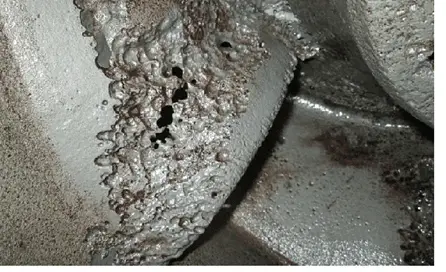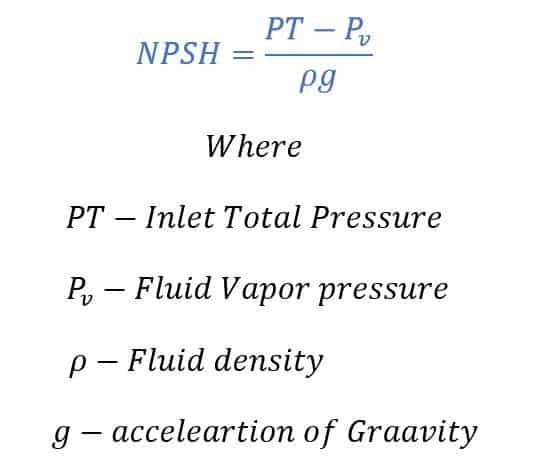Pump Cavitation is a phenomenon by which gas or vapor bubbles produces in a fluid as a result of changes in pressure or temperature. When the bubbles in the pump collapse, then they activate very strong shockwaves within the pump’s inner body, which may cause major damage to the impeller of the pump.
Cavitation in a pump is one of the most frequent inconveniences that occur in the pumping of fluids. It could occur in any type of pump, be it centrifugal, submersible, or self-priming, among others. Therefore, it is important to know how to identify cavitation in pumps before it causes more damage.
In this way, bubbles transfers along with the liquid. By raising the pressure of the waters in the displacement, the fluid stops occurring correctly. The pumping becomes inefficient. The bubbles can burst with force. This explosion could cause significant damage to pipes or nearby objects.
The importance of pumping system design and cavitation problem
A good design of pumping systems is essential during carrying out hydraulic engineering. The preventive measures in the design stage must be taken to avoid cavitation by ensuring sufficient suction pressure. Similarly, it is possible to contemplate the use of tubes of a larger diameter, or placing the pump at a lower level.
Types of Pump Cavitation
It is classified into two types:
- Inertial Cavitation
- Non-inertial Cavitation.
Inertial Cavitation
It is also known as transient cavitation. The main reason for Inertial Cavitation is the process when the bubble/void rapidly bursts, resulting in a strong shock wave. Inertial cavitation happens when the bubble diameter becomes about twice its original diameter during a single cycle of acoustic pressure. The large diameter bubbles burst violently and then collapse when driven by the inertia of the fluid. Thus, it causes potentially fragmenting into many smaller bubbles.
Non-inertial Cavitation
Non-Inertial cavitation is the phenomenon in which small bubbles in a liquid oscillate forcibly in the presence of an acoustic field. And, the bubbles collapse when the intensity of the acoustic field is insufficient.
It occurs when the bubble oscillates in shape and size but does not burst.
Causes of Cavitation
The main cause of cavitation in a pump is due to low NPSH (Net Positive Suction Head) at the suction end of the pump. The NPSH is the energy that pushes the liquid through the pump. When NPSH drops, cavitation occurs.
There are various reasons for a drop in NPSH from the expected values. The various scenarios are:
- When the suction pipe diameter is too small
- When the suction pipe is a long distance from the pump
- The pump is placed in a high place above the fluid source
- When the displaced liquid has a low vapor pressure
When the pump running speed is too fast.

Possible Consequences of Cavitation
- The cavitation cause reduction of the pumping capacity. When the speed of the pump drops, it cannot keep up with the incoming flow, leading to an overflow situation.
- Pump damage. Cavitation can cause excessive vibration, leading to excessive wear of the impeller, bearing rings, bearing plates, etc.
- Seals and bearings that fail prematurely.
- When cavitation is not rectified, it damages critical pump components, severely reducing pump life.
Warning signs to watch out for Cavitation?
The followings are the symptoms of cavitation in pumps.
- In a liquid, cavitation is the presence of air, vacuum, or bubbles.
- Lowering the pump capacity
- Causes damage to bearings and seals excessively
- Suddenly increased vibration
- Increased power consumption
Best Practices to Prevent Cavitation
Pump NPSH values
Keeping track of NPSH values can help you avoid cavitation.
- Calculate the availability of Net Positive Suction Head (NPSHa)
- Compare this value to the NPSHr (net positive suction head required).
- To avoid cavitation, the NPSHa should be a foot or two higher than the NPSHr.

The NPSHr is the pump’s design capacity, and it has a finite value for a particular pump. In contrast to NPSHr, the NPSHa depends on the system parameters. We can modify the NPSHa capacity of the pump. The followings are the factors on which the NPSHa value depends.
Stable Atmospheric Pressure
Atmospheric pressure depends on altitude. At higher elevations, pressure is lower, and there is not enough to push the liquid.
The vapor pressure of the pumped liquid
It depends on the viscosity and temperature of the pumped fluid. If the liquid is at ambient temperature, we can pump it easier in comparison to pumping of high-temperature liquids.
Static head between pump and water level
By moving the pump closer to the liquid level, you can increase the NPSHa.
Friction losses
We can reduce the Friction losses by the use of large-diameter pumps.
By altering these factors, the user of the pump can increase the NPSHa closer to the NPSHr, thus avoiding cavitation.
What are the devices to effectively diagnose and eliminate pump cavitation?
The easiest and most effective solution is to listen to the flow of the pump. The flow can be easily tracked through the use of flow meters. Flowmeters are available on the market. Choose the appropriate one depending on the type of liquid pumped.
Apart from the above method, one way to identify cavitation is to pay attention to sounds inside the pump. Usually, this is followed by vibrations. Also, the pump efficiency noticeably decreases. It is also possible for the trained pump technicians can listen to the pump sound variations without using an external device. These technicians can detect changes in vibrations, thus diagnosing cavitation.
Which pump applications are most susceptible to cavitation problems?
Cavitation is more common in pump applications that have high suction lifts and little or no discharge heads. For example, pumps used to bypass wastewater from sewers are among the most common occurrences of cavitation. Another example is the pumping of heated liquids that are close to their boiling points.
Read Next: